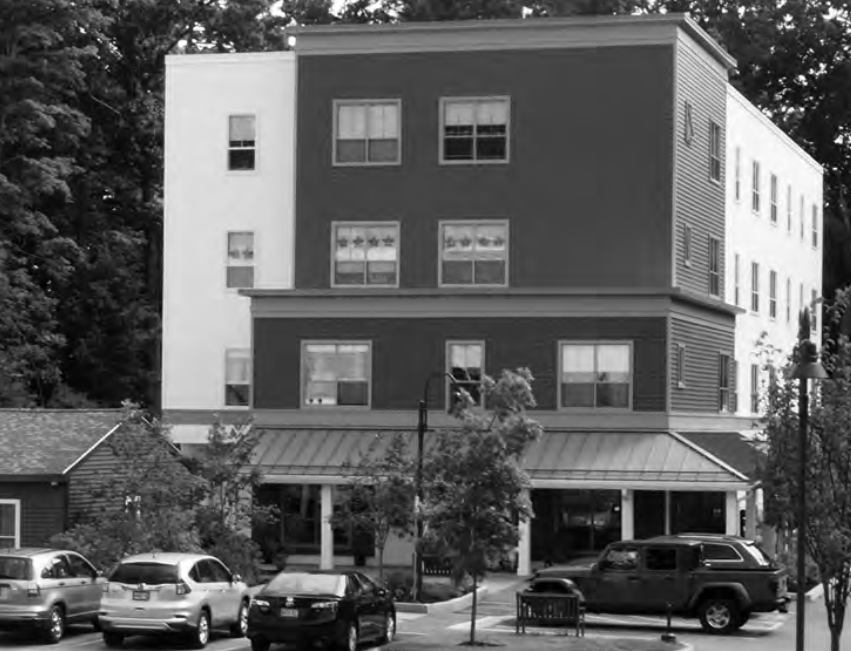As in other communities in southern Maine, the price of homes in Gorham continues to increase. The Portland Press Herald reported that the median price of a home in Cumberland County is now $580,000. Statewide the median cost of a typical home has gone from $200,000 in 2019 to $406,000 in 2024. Recognizing that more and more Mainers are being priced out of the market, the State Legislature passed LD2003, a bill that requires communities to amend their zoning ordinances to designate areas that allow for greater density. For Gorham, this means creating Density Bonus Zones that roughly correspond to the Residential Growth Zones as outlined in the town’s Comprehensive Plan.
To be in compliance, Gorham has to adopt a 2.5 times affordable housing density bonus where at least 51 percent of units meet affordability criteria. For rental units, income may not exceed 80 percent of median area income with housing costs not to exceed 30 percent of household monthly income. For home ownership, income may not exceed 120 percent of median income. Median incomes figures for an area (AMI) are calculated annually by the U.S. Department of Housing and Urban Development (HUD).
Although the purpose behind creating areas that permit greater density is to encourage developers to build affordable housing units, there is no requirement that they do so. There is no penalty built into the law for not coming into compliance on the location of Density Bonus Zones. But Tom Poirer, Gorham’s director of community development, said that the town could be compelled by court order to comply with LD2003 requirements.
Currently the Ordinance Committee and the Town Council are working on amending the Land Use and Development Code to allow for unit bonuses for affordable housing in the town’s growth areas, as required by LD2003. North Gorham and South Gorham are in the designated growth areas and, therefore, would be in the Density Bonus Zone. But it is questionable if developers of affordable housing would want to incur the water and sewage costs in locations so far from public water and public sewers. In addition, to meet the requirements of LD2003 there can only be two off-street parking spaces for every three units, a challenge for areas far from the town center with no public transportation.

Avesta housing located on School Street (Route 114) in Gorham.
As with the Gorham Comprehensive Plan, LD2003 encourages more density closer to the center of town and is in keeping with the desire in Gorham to retain as much agricultural and recreational land as possible. However, developments currently in the planning stage close to “the village,” are all market rate projects with some provision for “over 55”, or senior housing, units. These units will undoubtedly meet a need as this is the largest demographic in Maine. According to Christopher La Roche, executive director of Westbrook Housing Authority, his agency is building three senior units for every family unit. However, he said that there is a growing need for housing that younger people can afford in the face of rising building costs, housing prices, and rents.
Gorham has no housing authority. Westbrook Housing serves as a resource for the area, including Gorham. They build and maintain affordable housing projects, and have assisted in facilitating projects in Westbrook, Windham and other communities in suburban Cumberland County.
Currently Gorham has several affordable housing projects built and maintained by Avista, a non-profit housing agency, for “over 55s” and people with disabilities. A survey by Market Vision Partner, Inc. showed the average rent for a two-bedroom unit in the Portland region, which includes Gorham, to be $2,554. HUD’s determination of 2024 Fair Market Rate for a two-bedroom unit in the Portland area is $1,946. The Market Vision survey shows the average two-bedroom rental in Gorham to be $1,748, but they only identified 19 rental units.
These data indicate that rents in Gorham are less expensive than in some surrounding towns near the coast and in Portland, but it does not show how much rental property is available. With the adoption of LD2003 Density Bonus Zones, Gorham will be in a position to offer developers an incentive to build affordable housing that will increase density near the center of town.
Financing for affordable housing is complex and requires cooperation between municipalities, non-profits, developers and federal and state resources. But, as LaRoche said, “The growing need is inevitable and communities will have to respond with housing on the full income spectrum. They need to fully engage in identifying action plans for smart growth that enhances housing and overall community.”

